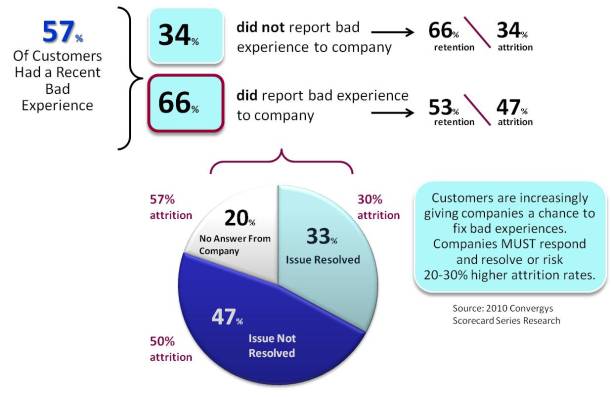This week, alongside many articles designed to amplify popular fascinations, CNN ran an article about customer experience entitled, How Social Media Are Amplifying Customer Outrage (http://bit.ly/rcOik5). In this op-ed, Mashable bureau chief Chris Taylor gives several examples of social media outrage waves that forced companies to change course. He asks, “…do these things stoke anger that would have otherwise fizzled out?” It’s a good question, and one I’ve been thinking about lately. With the option to “like”, tweet, and comment on every web posting and article, customers have more voice than ever before. But what does that actually mean to the companies trying to serve them? Does it translate into imperatives for executives or guidance for marketers?
Knowing the value of customer input may be more art than science. Sometimes it’s clear that a wave of social media outrage is building and can’t be ignored. (Chris Taylor outlines several, including the backlash around recent Netflix price increases.) If a boycott gains momentum it can severely threatens revenue and reputation. But sometimes customers just want a voice – a quick chance to give a thumbs up or down. If they had to write a letter or show up at a hearing, 99% wouldn’t bother. The trick is to understand the difference between customer input that can help marketers understand key segments, and input that threatens to snowball. The authors of Social Marketing to the Business Customer (http://amzn.to/lvOjP5) recommend building a “social media monitoring dashboard” to collect all the customer commentary from around the web, and spend several chapters advising how to build, understand and respond to the information.
Dashboard or no, one scenario is clearcut, though. When a customer has a bad experience, tells the company, and they refuse to respond, it’s likely that the customer will post details on social media. Under the right conditions, including media coverage that stokes anger, the complaint could go viral. So when individual customers give companies a chance to respond to grievances, they should always do so. Research I directed last year (http://bit.ly/mzJhTg) showed that, of the 57% of consumers who had a recent bad experience, 66% will report it to the company. 33% of the time, the companies respond and resolve the issue. 47% of the time companies respond but do not resolve the issue. 20% of the time they do not respond at all. Failure to respond is asking for attrition – and, even worse, may lead to social media coverage. Those individual customers just wanted attention, a far less costly situation than a social media outrage wave.
While sometimes company actions that would have previously been under the radar become a popular punching bag, the majority of online activity is simply customers exercising their new social-media vocal chords. Still, all activity is informational, and customers reporting bad experiences require attention in some form. Smart companies will invest in the resources to collect, analyze and respond appropriately to customer input. After all, what customers really want when they speak out on social media, is to be heard.




